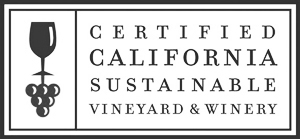I
have always had a passion for premium wines. I have pursued this
passion by visiting, studying, and tasting at premier wineries and
vineyards here in the U.S. and abroad. I was also inspired by my
close friend and coastal engineering colleague, the late Orville
Magoon, as he developed the world class Guenoc Estate Vineyards
& Winery, and it only served to intensify my desire to one day
own and develop a vineyard for growing premium wine-making grapes.
In
1999 I took the plunge and purchased 43 acres of undeveloped land
in the Petaluma Gap growing region, just east of Petaluma. I immediately
had the soil tested for the growing of grapes. Next, before committing
to develop the vineyard, I researched what varietals to grow – Chardonnay,
Pinot Noir, or some combination of the two, which, along with Syrah,
are renowned for flourishing in the Petaluma Gap. Pinot Noir emerged
as the clear winner. Determining which of the many Pinot Noir clones
to grow (there are over 40 different clones of Pinot Noir documented
in the Catalogue of Grapevine Varieties and Clones) was a difficult
choice requiring extensive research of the clones and analysis of
local growing conditions. The five clones that rose to the top (Pinot
Noir clones 115, 667, 777, 828 and Pommard 4) are all well known,
high quality clones for this region, and are excellent for blending
in various combinations to produce well-structured, complex, full
bodied Pinot Noir wines.
In
the pantheon of California pinot, Sonoma Valley sits at the top.
This can be partially attributed to name recognition. Along with
neighboring Napa Valley we are one of the most recognized wine regions
in the world. But, more importantly, the conditions for producing
superb Pinot Noir grapes here are unsurpassed. The Petaluma Gap
is the primary gateway for the regular ebb and flow of fog from
the Pacific Ocean. It arrives in the evening, frequently dropping
the temperature 40 degrees from its daytime high and then retreats
the following morning. This maritime air conditioner extends the
growing season and yields grapes that have achieved full ripeness,
with mature tannins and elegant aromas. The result in the glass
is a well-structured, complex, full-bodied wine with silky texture
and rich aromatics.
My
intention is that by starting with the best clones available, growing
them in the best possible setting for Pinot Noir grapes, and carefully
tending the vines and the fruit, we can position you to create the
dazzling Pinot Noir wines of your dreams.
